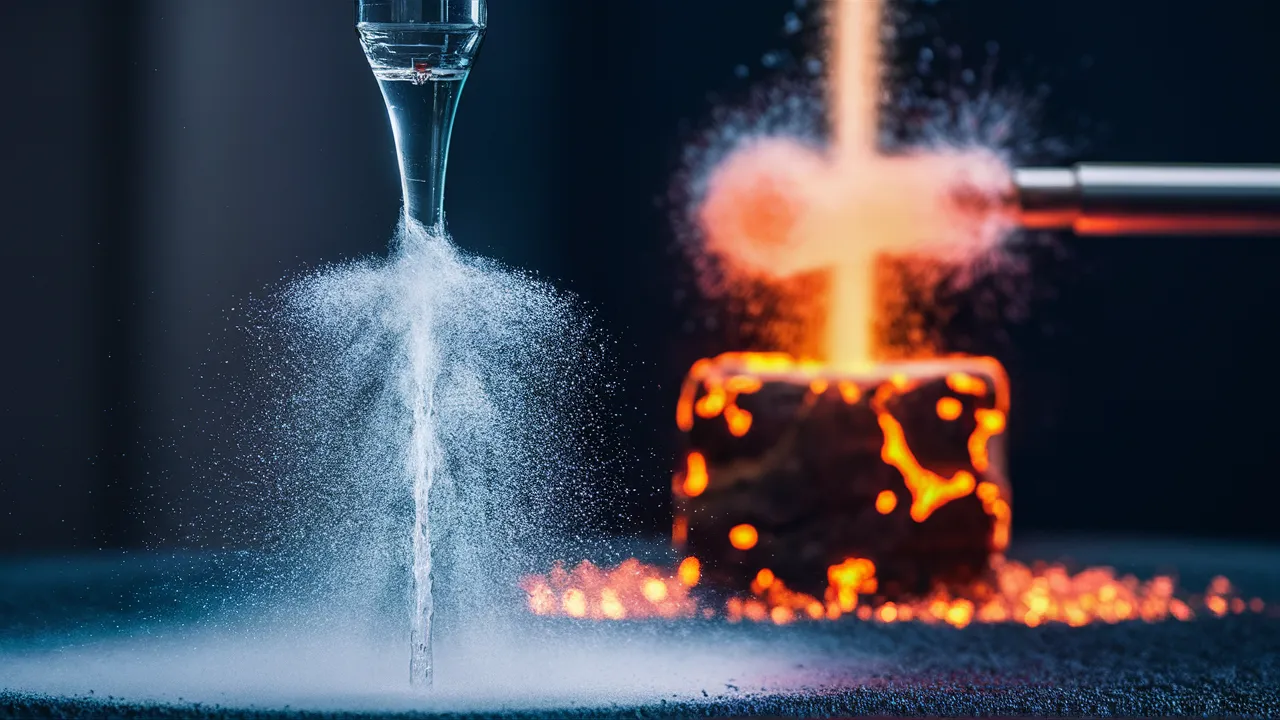What is Atomization technology?
Imagine breaking down a liquid into a fine mist or transforming molten metal into a cloud of tiny particles. This is the magic of atomization technology, a process that plays a crucial role in various industries. But how exactly does it work, and what are its applications? Let’s delve into the fascinating world of atomization.
The Fundamentals of Atomization
Atomization is the process of breaking a liquid into smaller droplets or particles. There are several ways to do this, each with its own benefits and drawbacks. The key lies in disrupting the cohesive forces holding the material together, allowing it to fragment into small pieces.
There are two main categories of atomization techniques:
1. Pneumatic Atomization:
This method uses a high-velocity gas stream to break up the liquid. Imagine spraying water with a garden hose, the pressurized water stream breaks into droplets as it exits the nozzle. There are two groups of pneumatic atomization.
- Two-fluid: Here, a separate stream of gas impinges on the liquid stream, causing it to break into droplets. Think of an airbrush used in painting, compressed air atomizes the paint for a smooth application.
- One-fluid: In this situation, the liquid is pushed through a nozzle under pressure, creating a turbulent flow that turns it into droplets. This method is often used in household spray bottles.
2. Hydraulic Atomization:
This method relies on the liquid’s own momentum to achieve atomization. The liquid is forced through a small orifice at high pressure, which disrupts its internal cohesion and leads to droplet formation. Think of a water fountain, the pressurized water stream breaks into droplets as it shoots upwards.
Choosing the Right Method
The ideal atomization method depends on several factors, including:
- Desired droplet size: Different applications require different droplet sizes. For example, paint requires finer droplets compared to fire sprinklers.
- Material properties: The viscosity (resistance to flow) and surface tension of the material can influence the ease of atomization.
- Production rate: The chosen method needs to be able to handle the desired volume of material being processed.
Beyond Liquids: The World of Powder Production
Atomization is commonly linked with liquids. It also plays a vital role in creating fine powders from molten metals, alloys, and even some plastics. This process is known as metal atomization. It involves breaking down the molten material into a stream of tiny droplets which then rapidly solidify into spherical particles.
Here are some popular metal atomization techniques:
- Gas Atomization: Similar to pneumatic atomization, a high-velocity gas stream breaks up the molten metal stream into droplets. This method is suitable for a wide range of metals and alloys.
- Water Atomization: Here, a high-pressure water jet disrupts the molten metal stream. This produces a slightly irregular particle shape, beneficial for some applications like metal filtration.
- Plasma Atomization: This advanced technique uses an intensely hot plasma torch to melt and atomize the material. It creates highly pure, spherical powders, ideal for demanding applications like aerospace components.
The Diverse Applications of Atomization
Atomization technology finds application in numerous industries, each utilizing the benefits of finely dispersed materials. Here are some key examples:
- Food Industry: Milk powder, instant coffee, and powdered flavorings are all products of atomization. It helps create easily dis-solvable and shelf-stable food products.
- Pharmaceuticals: Inhaled medications rely on atomized drug particles for efficient delivery to the lungs.
- Agriculture: Herbicides, pesticides, and fertilizers are often applied as sprays, using atomization to ensure distribution.
- Fuel Injection: Modern car engines use atomized fuel for efficient combustion and improved performance.
- Metal Additive Manufacturing (3D Printing): Metal powders made by atomization are used to create complex 3D printed parts.
Read More: All Star Transportation: Your Moving Needs Fulfilled
The Future of Atomization
As technology advances, atomization methods are becoming more sophisticated. Researchers are exploring new techniques like ultrasonic atomization, which utilizes high-frequency sound waves for finer control over droplet size. New materials with special properties are being created, expanding what can be broken down into atoms.
FAQs
1. What is the difference between atomization and spraying?
Atomization creates a finer mist of droplets compared to spraying, which can produce larger droplets or a continuous stream.
2. Can atomization be used with solids?
Yes! Metal atomization breaks down molten metals into powder form.
3. What are some advantages of using atomization?
1. Creates a larger surface area for reactions (e.g., faster drug delivery)
2. Improves material distribution and uniformity (e.g., paint application)
3. Enables production of fine powders for specific applications (e.g., 3D printing)
4. What are some limitations of atomization?
1. Requires specific equipment and expertise for each method.
2. May not be suitable for all materials due to viscosity or other properties.
3. Fine droplets can be more susceptible to evaporation or airborne contamination.
5. How does the size of the droplets affect the application?
Smaller droplets have a larger surface area, impacting processes like drug absorption or chemical reactions. Larger droplets are better suited for applications like fire suppression.
6. What is the role of gas in pneumatic atomization?
The gas stream disrupts the liquid, breaking it into smaller droplets.
7. How does hydraulic atomization work?
High pressure forces the liquid through a small opening, causing internal disruption and droplet formation.
8. What are the benefits of gas atomization for metal powders?
It produces a wide range of metal and alloy powders with good control over particle size.
Final Thought
Atomization technology, though often hidden from plain sight, is an essential process shaping our world in countless ways. Atomization is important in making the things we use daily, like food, medicine, cars, and buildings. It breaks things down into tiny particles, helping create the materials we need. As research and development continue, this versatile technology promises even more exciting possibilities for the future.




